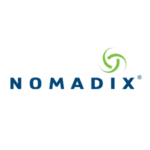 If you’re of a certain age like me, you’re old enough to remember the challenges of trying to share files between Windows and Mac computers in the 1990s. And you may even remember the VHS/Betamax battle of the 1980s. Those were some frustrating days that virtually half of today’s workforce doesn’t even know existed.
If you’re of a certain age like me, you’re old enough to remember the challenges of trying to share files between Windows and Mac computers in the 1990s. And you may even remember the VHS/Betamax battle of the 1980s. Those were some frustrating days that virtually half of today’s workforce doesn’t even know existed.
Technology incompatibility is not only frustrating and inconvenient, but it’s also costly. Too often it requires purchasing redundant equipment, deploying complex workarounds to patch together integrations, and still suffering breakdowns or glitches anytime something new is introduced to the system.
In so many ways, technology has evolved to eliminate this interoperability problem: Macs and PCs now play well together, mobile devices handoff between cellular and Wi-Fi with minimal friction, and having the right hardware to watch your favorite movie is a thing of the past—streaming services are compatible with most connected devices.
But in hospitality, that’s hardly the case. In fact, at most properties, everything is segregated: the admin workstations, back office, and PMS run on one (or more) network, guest Wi-Fi runs on another, and wireless door locks, TVs/streaming, and VoIP services each have their own separate hardware and networks.
Unsurprisingly, this siloed system is inconvenient, costly, and complex. As new technologies come online every day, keeping up with guest expectations and staff needs, as well as new IoT and security requirements, typically means buying all new networking hardware.
The HTNG Next Generation Infrastructure Workgroup is tackling this problem, looking at future-ready solutions that can help reduce or eliminate the complexity of connectivity in hospitality through technology and best practices.
One of those proposed solutions is Converged Networks, which eliminate the challenge of constantly building and re-equipping networks for new applications. By creating a single, ubiquitous network designed for seamless interoperability and expansion, deploying a Converged Network delivers the scalability, centralized management, simplicity, and cost-effectiveness to meet the needs of today and the increasingly connected future.
Here’s how:
- Scalability. This benefit can’t be overstated. Converged Networks allow you to add anything to the network at any time with minimal disruption. Even better, you’ll never need to redesign or rip-and-replace equipment to do it, which futureproofs your investment. Built-in compatibility means you can add on and grow as your needs do.
- Support for a wide range of applications. A Converged Network allows you to deploy essentially any application, from facilities tech like access control, door locks, elevators and energy management; back-office business applications like PMS, POS, reservations, etc., and guest room solutions like thermostats, safes, casting, IoT, and minibar, as well as telecommunications like PBX, voicemail, and VoIP telephony. There’s virtually no limit.
- Centralized management. Converged Networks feature a single, comprehensive management platform that’s preferably cloud-based. This not only enables properties to simplify deployment of new solutions and monitor traffic load across the network but also provision bandwidth based on specific requirements. For example, operators can allocate more for guest Wi-Fi access to meet peak demand or shift more for bandwidth toward an event space to accommodate the group demand.
- Simplified security. With a converged network, security protocols can be implemented across the board to protect the network and provide safe computing for guests. For example, with a Passpoint solution (also known as Hotspot 2.0) in place on a Converged Network, guests can connect seamlessly to the Wi-Fi with automatic authentication so there’s no worry about SSID spoofing that might lure guests into connecting to an unsecure network. Meanwhile, security policies can be easily enabled via segmentation and authorization, such as meeting PCI compliance requirements at the front desk.
- Customizable configuration. One of the best features of a Converged Network is that it can be adapted to meet almost any need, including any size property or set up (even historic buildings), new construction or retrofit, brand/corporate standards, and geographic requirements for integration with government or national telephony systems, as well as ever-changing security requirements.
- Single-supplier solution. A key feature of Converged Networks is that all hardware components for a specific network category (e.g., wired and wireless) are supplied by a single manufacturer. This homogenous design makes hardware compatibility issues a thing of the past and ensures time-efficient upgrades across the network. Settling on a single equipment brand also makes for simpler procurement, and it makes it easier to collaborate with a single partner who can customize the deployment to meet your needs.
Converged Networks deliver unbeatable scalability, adaptability, and reliability that help hoteliers deliver the connectivity, convenience, and bandwidth guests demand now and in the future while freeing up internal resources to focus on value-added services rather than troubleshooting.
















